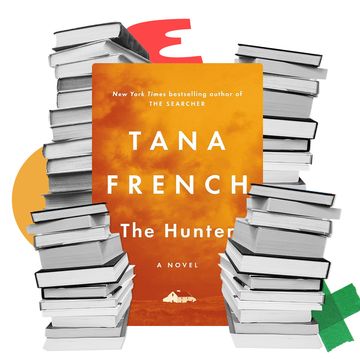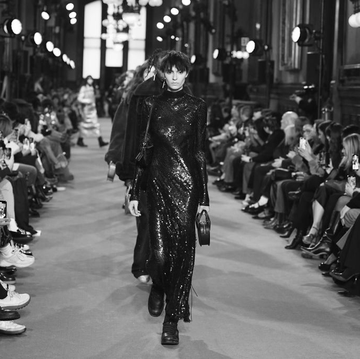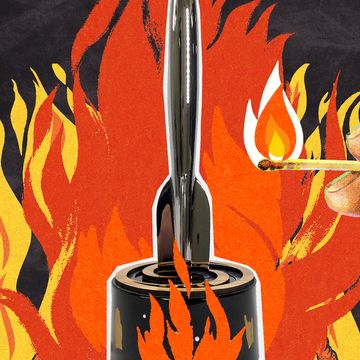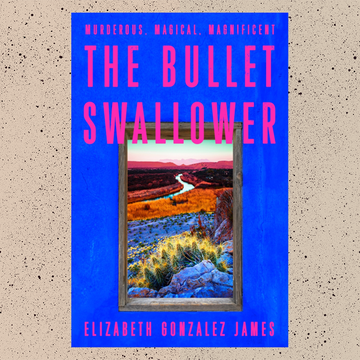For the first time, this year's Man Booker Prize longlist includes a graphic novel: Nick Drnaso's Sabrina, which tells the story of a young girl's disappearance and explores the effect 24-hour news media has on her community.
"My fellow judges read it and one said, ‘This transcends genre’, and someone else said, 'This shows what genre can do at its best,'" Booker judge Val McDermid said. "It is an extremely clever piece of storytelling with characters you care about, and that’s what we were looking for – something well written that engages with mind and heart."
The Booker judges have taken their sweet time getting here, but if you're just getting into graphic novels yourself, start with these.
Maus by Art Spiegelman (1991)
An obvious pick, but an essential one. Spiegelman interviewed his Holocaust survivor father over several years, and transformed his memories of Auschwitz into an emotionally wrenching - and very literal - game of cat and mouse, with Nazis depicted as humans with cat heads and Jewish people as mice. Far from sanitising the violence, outrage and sadism of the Holocaust, Maus has a hyperreal feel, and is as much about dysfunctional families and memory as it is genocide. Maus was the great breakthrough in convincing mainstream readers that graphic novels could have the clout of novels or films, so it's a mandatory primer.
March by John Lewis, Andrew Aydin and Nate Powell (2015)
A deft examination of how the civil rights movement changed America, the story cuts between the young John Lewis's life in segregationist Alabama, where he is introduced to Martin Luther King Jr's non-violent protest, and resistance in the present day, where Lewis is a Georgia congressman getting ready for Barack Obama's inauguration. Yep, 2009 does feel like quite a long way away now, but March is personal and emotive and moves like a well-made documentary, acting as a reminder that sometimes, justice can win.
Through The Woods by Emily Carroll (2014)
If you're still getting over Hereditary but are still quite hyped for upcoming horrors Suspiria and What Keeps You Alive, this haunting and eerie anthology has an authentic gothic feel and can deliver jump-scares and dread as effectively as any creepy, tongue-clicking child can on film. Influences at play here include the Brothers Grimm's fairy tales, Stephen King, ancient folk horrors and Edgar Allan Poe together with shadow-laden artwork which evokes Goya as much as it does David Lynch and John Carpenter. Best read by a fireside on a stormy night.
Paper Girls by Brian K Vaughan and Cliff Chiang (2015)
Yes, Paper Girls is yet another example of sci-fi roping in a little late-80s nostalgia, but it's also a pretty irresistible one. A gang of teenage girls bump into each other while doing their paper rounds early on the morning after Halloween, and see weird boys smashing up their suburban neighbourhood. Who - or what - are they? The answer involves time-travel, obviously. With its wry tone and neon-hued artwork, it's pitched somewhere between Stand By Me, Heathers and the video for Thriller.
Bitch Planet by Kelly Sue DeConnick and Valentine De Landro (2014)
This feminist take on women-in-jail grindhouse films is set on a prison planet where non-compliant women are sent by the Council of Fathers when they cause too much bother on Earth. It's more satirical than polemical, swerves preachiness in favour of pulpy thrills and is ceaselessly and unapologetically violent. For all the splenetic action, though, it works in a lot of pointed critiques of misogyny, racism and transphobia. It's not subtle, but it's a lot of fun.
The Wicked + The Divine by Kieron Gillen and Jamie McKelvie (2014)
Superheroes are obviously your bread and butter graphic novel staples, but The Wicked + The Divine does them in a fresh and oddly British way: with all the spectacle, mythos and in-fighting you'd hope for but a healthy dollop of cynicism too. A dozen gods are reincarnated every 90 years, each time assuming different forms for their two-year life cycle. In 2014 they return as pop stars: one channels Thin White Duke-era Bowie, and there are Kanye and Daft Punk analogues too. The story follows Laura, a teenage superfan from Brockley, who tries to get closer to her heroes but by the time she realises she's messing with forces way beyond her control, it's too late to get out.
From Hell by Alan Moore and Eddie Campbell (1999)
Alan Moore has become a sort of druidic shaman figure among graphic novel fans, and while Watchmen, Batman: The Killing Joke and V For Vendetta are all great, From Hell is his most unsettling work. It tells the half-factual, half-imagined story of Jack the Ripper, and the name comes from a letter which was purportedly sent to the authorities by the killer himself in 1888, along with half a human kidney (the other half of which he had supposedly eaten). That gives you a sense of the tone here. It's part crime noir, part psychological study of evil, and intensely gripping.
Pyongyang by Guy Delisle (2004)
This study of the uncanniness and mundanity of Pyongyang describes the two months Delisle spent in the North Korean capital while working for a French animation company. It gets past using the same state-sanctioned images of North Korea you see all the time on Newsnight (marching guards, the Kim Il-Sung statue, clapping crowds, that sort of thing) by humanising the city's ordinary working people, with Delisle's ear for the tragicomic and his spare, simplistic artwork capturing the bleakness of life in the world's most secretive state without battering you over the head with it.
Hip Hop Family Tree by Ed Piskor (2013)
This hefty book celebrates the legends of the early days of rap and hip hop, following pioneers DJ Kool Herc, Afrika Bambaata and Grandmaster Flash as they take over the Bronx - as well as later innovators like Sylvia Robinson, Reverend Run and Rick Rubin. It's not just a hagiography of some legacy artists either; it pulls together the stories of how graffiti, b-boys and DJing started to change youth culture in New York and, soon, across the world, and becomes a vibrant social history of late 20th century urban America.














